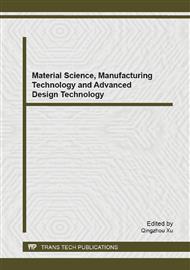p.74
p.78
p.81
p.86
p.90
p.95
p.99
p.103
p.107
Nanoemulsion Synthesis of Magnetic-Optical CoNiAu Nanoparticles
Abstract:
Multi-functional CoNiAu nanoparticles were successfully synthesized via nanoemulsion method with the use of PEO-PPO-PEO as the surfactant, C14H29CH(OH)CH2OH as the reducing agent, Ni (acac)2, Co (acac)2 and Au (ac)3 as precursors. The characterization of the CoNiAu nanoparticles was performed using X-ray powder diffraction (XRD), fourier transform infrared spectroscopy (FTIR), transmission electron microscopy (TEM), vibrating sample magnetometry (VSM) and UV-vis near IR spectrophotometer (UV-vis). The XRD and TEM analysis confirm the formation and structure of the nanoparticles. The UV-vis and VSM measurements display the optical and magnetic properties of the CoNiAu nanoparticles at the room temperature. The CoNiAu nanoparticles with the well defined optical and magnetic properties are promised for optical, magnetic, catalytic and biomedical applications.
Info:
Periodical:
Pages:
90-94
Citation:
Online since:
March 2014
Authors:
Price:
Сopyright:
© 2014 Trans Tech Publications Ltd. All Rights Reserved
Share:
Citation:


